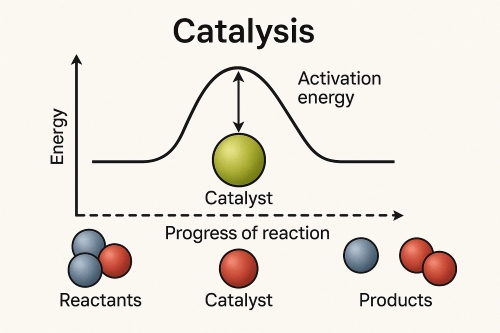All About Electric Vehicle Batteries
Electric vehicles are regarded as one of the significant innovations in the automotive sector, creating a pathway for more environmentally friendly transportation. The core of each electric vehicle is its battery, which powers the vehicle and is thus a key determinant of efficiency. Therefore, it will be essential to comprehend how such batteries operate, their components, and what influences their lifespan to understand the future of electric vehicles.

How Do Electric Vehicle Batteries Work?
Energy storage and conversion are the fundamental principles governing the operation of batteries in electric vehicles. The process entails storing electrical energy and then converting it into motion through electric motors. When charging a vehicle, electrical energy is transferred from the charging source to the battery. This energy stored within is then released to the motor to provide movement for the vehicle.
In straightforward terms, an EV battery acts as a large energy repository that supplies the necessary power for the operation of the vehicle. While traditional internal combustion engines operate on fuel, EVs utilise their batteries as a clean, efficient method of functioning and produce no tailpipe emissions.
Key Components
An electric vehicle battery consists of several key components, which interact to provide efficient storage and discharge of energy. The main parts include:
1. Anode and Cathode: These are the two electrodes in a battery. Typically, the anode is composed of graphite, whilst the cathode comprises lithium metal oxides in lithium-ion batteries. The anode releases electrons during discharge, while during charging, the cathode absorbs them.
2. Electrolyte: The electrolyte is the substance that enables the flow of ions between the anode and cathode, thereby allowing charge/discharge cycles of the battery. In most EV batteries, it is a solution of lithium salts in a liquid solvent.
3. Separator: It separates both the anode and cathode to prevent direct contact that may result in short circuits. It allows ions to pass through during the charge and discharge processes.
4. Battery Management System (BMS): The battery management system is an electronic system that controls and maintains the performance of the battery. The BMS enables the battery to operate within safe parameters, balancing charge levels, temperatures, and voltages across all cells.
Related reading: The Heart of the Lithium-ion Battery: Cathode Materials
Types of Electric Vehicle Batteries
There are several types of batteries in electric vehicles that have distinct advantages and disadvantages. The most common types include:
1. Lithium-Ion Batteries: The predominant type of battery utilised in EVs today, lithium-ion batteries display high energy density, long life spans, and relatively low weight. They are capable of storing more energy per unit of weight compared to other types of batteries, which is critical in ensuring maximum range for an electric vehicle.
2. Nickel-Metal Hydride Batteries: These are primarily employed in older hybrid electric vehicles. With lower energy density compared to lithium-ion batteries, NiMH batteries have a much better cycle life in extreme temperatures. They are also less prone to degradation over time compared to lithium-ion batteries.
3. Solid-State Batteries: An emerging technology, solid-state batteries replace the liquid electrolyte with a solid electrolyte, potentially offering improved energy density, safety, and lifespan. However, they are still in the development phase and not widely available in commercially available EVs.
4. Lead-acid batteries are used in some of the lower-cost or older models of EVs. However, lead-acid batteries are not as efficient as lithium-ion batteries. Consequently, they have lower energy density, which makes them heavier and requires more space for storing the same amount of energy.
Battery Capacity, Range, and Charging
The capacity of an EV battery is typically measured in kWh. This reflects the amount of energy the battery can store and, in turn, how far the vehicle can travel on a single charge. For instance, an EV with a 60 kWh battery can, in theory, travel 60 miles using one kWh of energy for every mile.
Range represents one of the most significant considerations for prospective EV buyers. A larger battery capacity generally corresponds to a longer range. Range can, however, be influenced by several factors, such as driving habits, road conditions, and vehicle weight. Most modern EVs offer ranges of between 200 to 370 miles on a full charge, although some high-end models can exceed this.
The process of charging the EV involves simply connecting to an electric power source. It functions to replace energy in the battery. Charging times vary depending on the charging level: Level 1, Level 2, or DC fast charging. Among these three, DC fast chargers are the most rapid, with an EV reaching 80% charge in under 30 minutes. Generally, home charging requires several hours, while public stations may take 30 minutes to several hours, depending on the infrastructure.
Factors Affecting Battery Lifespan
EV battery life can significantly affect the total cost of owning an EV: Although lithium-ion batteries may last from 8 to 15 years in an EV, actual battery life depends on several factors:
1. Charging Habits: Frequent deep discharges—those that drain the battery completely—or habitually charging a battery fully to 100% accelerate the degradation process of a battery. Ideally, EV owners should maintain the battery charge between 20% and 80% for optimal battery longevity.
2. Temperature: Extreme heat or cold negatively impacts battery life. High temperatures can overheat the batteries, while low temperatures can impede the battery's power delivery capabilities.
3. Patterns of Use: Consistent driving patterns, such as speed and acceleration, also influence the degradation process. For example, rapid acceleration results in faster battery drain compared to smooth and moderate driving.
4. Battery Chemistry: Not all battery chemistries degrade at the same rates. For instance, LiFePO4 batteries generally demonstrate longer lifespans at the expense of somewhat lower energy density than lithium nickel cobalt manganese (NCM) batteries.
5. Maintenance and Care: Periodically updating the software and maintaining it will ensure that the battery is in good condition. Furthermore, a BMS can assist in balancing the charge of the cells so that no cell is overcharged or undercharged and that the operational limits of safety are maintained.
Can EV Batteries Be Recycled?
EV batteries can be recycled, though the process is complex and still developing. Lithium-ion battery recycling generally involves the separation of valuable materials such as lithium, cobalt, nickel, and graphite that can be reused in new battery production. Additionally, with rising demand, electric vehicles are driving the need for efficient recycling processes that can minimise environmental impact and reduce raw material extraction.
The recycling process also addresses concerns related to battery disposal at the end of an EV's life cycle. Numerous automakers and major battery manufacturers are striving to enhance the technologies behind recycling and improve the efficiency of the process. Some companies are even exploring the feasibility of repurposing used EV batteries as storage devices in energy applications ranging from grid storage systems.
Conclusion
Electric vehicle batteries represent the core of the transition away from fossil fuels towards sustainable energy sources in transportation. As technology progresses, there will also be ongoing improvements in battery performance, lifespan, and recyclability. Comprehending the fundamental mechanisms of these batteries is crucial for both consumers and industry stakeholders intending to make informed decisions in this rapidly evolving market.

 Bars
Bars
 Beads & Spheres
Beads & Spheres
 Bolts & Nuts
Bolts & Nuts
 Crucibles
Crucibles
 Discs
Discs
 Fibers & Fabrics
Fibers & Fabrics
 Films
Films
 Flake
Flake
 Foams
Foams
 Foil
Foil
 Granules
Granules
 Honeycombs
Honeycombs
 Ink
Ink
 Laminate
Laminate
 Lumps
Lumps
 Meshes
Meshes
 Metallised Film
Metallised Film
 Plate
Plate
 Powders
Powders
 Rod
Rod
 Sheets
Sheets
 Single Crystals
Single Crystals
 Sputtering Target
Sputtering Target
 Tubes
Tubes
 Washer
Washer
 Wires
Wires
 Converters & Calculators
Converters & Calculators
 Write for Us
Write for Us





 Chin Trento
Chin Trento



